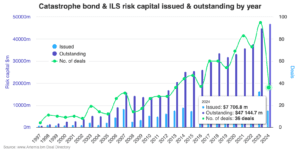What’s prompting a benefits coverage rethink?

COVID-19, coupled with increased awareness on mental health problems and lower stigma, have created a perfect storm for the increase, according to Sun Life. The awareness is particularly pronounced among younger generations that have grown up as mental health barriers came down.
In a new report, the carrier reported that drug claims to treat depression, anxiety, and other mental health disorders jumped by 24% among Canadians 30 years old and below between 2019 and 2021. Adults aged 30 to 39 saw a 13% rise in claims.
“These trends are forcing employers to be very thoughtful and strategic about their own mental health strategy, and the intersection with their benefit plans,” said Michael Bradie (pictured), vice president of market development at Sun Life. “For example, we’ve seen a number of our plan sponsors increase maximums for psychological coverage.”
The Canadian Psychological Association recommends coverage between $3,500 to $4,000 per year, which would cover about 15 to 20 sessions, the typical number required to achieve a therapeutic outcome.
Sun Life also found a whopping 51% increase in mental health paramedical claims (which cover treatments like naturopathy or massage therapy) for Canadians aged 35 and younger. Mental disorders triggered 16% of total drug claims at the insurer in 2021.
Long-term trends in mental health benefits
Sun Life’s results seem to point to a long-term trend that began at the onset of the COVID-19 pandemic. Life and health insurers paid $580 million in mental health claims in 2021, 45% more than the prior year, data from the Canadian Life and Health Insurance Association (CLHIA) showed.
“Mental health supports have become an increasingly important and relevant health benefit that’s helping so many people through the strains of the pandemic,” said Stephen Frank, president and CEO of CLHIA. Frank was commenting on the findings released late last year.
“We know that individuals have experienced increased levels of stress, anxiety, burnout, and depression. In fact, the proportion of Canadians reporting the diagnosis of depression or anxiety has increased 30% since the pandemic,” Bradie said.
Backlogs in the healthcare system mean claims could continue to rise, as patients waiting for care tap into their mental health benefits. But Bradie sees a silver lining in this trend.
“More people are aware of the issues, which means they’re more likely to seek help and get the treatment they need,” Bradie told Insurance Business. “While we still have work to do in this area, this is a very welcome evolution on how we think and talk to help in Canada.”
Employers ‘pivotal’ to supporting mental health
Employers have a pivotal role to play in supporting the mental health of their employees, according to Bradie. The executive outlined three ways for them to support the mental wellbeing of their workforce:
Promoting a “psychologically safe” workplace
An environment where people feel able to express themselves or share their struggles can lift the stigma and pressure for those that are struggling.
“In practice, this means that leaders should promote a psychologically safe workplace,” Bradie said. “The starting point is ensuring that you’ve got the right foundation to have those conversations.”
Actively listening and being engaged in team meetings, establishing trust, and adopting a “fail forward” approach are a few ways employers achieve a psychologically safe workplace.
Investing in mental health programs and tools
There are a wide variety you of virtual health tools that employers can offer, and Sun Life said it is seeing greater uptake in apps and online mental health programs among plan sponsors.
“These tools allow their employees to access health care at the convenience of their home. Younger generations are especially used to using these types of tools in their daily lives,” said Bradie.
Increasing communication on mental health strategies
Finally, employers need to communicate their actions or benefits so that employees are aware of how and when to use them. Sun Life’s research revealed a 25% increase in the utilization of mental health benefits following an awareness campaign.
“Even if you have an optimal solution, you still need to get the word out,” said Bradie. “Think emails, town halls, webinars… you need a communication strategy so that your employees are aware of the solutions that are available to them.”
What are your thoughts on this story? Leave them in the comments below.





